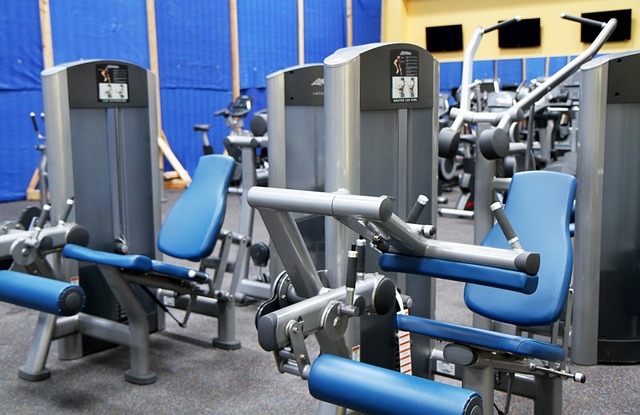In recent years, low-impact workouts have gained immense popularity among fitness enthusiasts, athletes, and individuals recovering from injuries. These exercises are designed to minimize stress on the joints while still delivering significant health benefits. Whether you’re a seasoned athlete looking to avoid injury or someone new to fitness seeking a sustainable routine, low-impact workouts offer a versatile and effective solution. Let’s explore why these exercises are so beneficial and how they can transform your fitness journey.
1. Joint-Friendly and Injury Prevention
One of the most significant advantages of low-impact workouts is their ability to protect your joints. High-impact exercises like running or jumping place considerable strain on your knees, hips, and ankles, which can lead to discomfort or even long-term damage. On the other hand, low-impact activities such as swimming, cycling, yoga, or walking distribute weight more evenly across your body, reducing the risk of joint pain or injury.
This makes low-impact workouts ideal for older adults, pregnant women, or anyone with pre-existing conditions such as arthritis or osteoporosis. By prioritizing joint health, these exercises ensure that you can stay active without compromising your physical well-being.
2. Suitable for All Fitness Levels
Low-impact workouts cater to individuals at every stage of their fitness journey. Beginners often find high-intensity exercises intimidating or overwhelming, but low-impact alternatives provide an accessible entry point into the world of fitness. At the same time, experienced athletes can use low-impact routines to complement their training regimens, allowing them to maintain cardiovascular endurance and strength without overtaxing their bodies.
For instance, professional runners might incorporate swimming or elliptical training to cross-train and prevent burnout. Similarly, someone just starting out can build confidence by practicing Pilates or taking brisk walks before progressing to more demanding activities.
3. Improved Cardiovascular Health
Contrary to popular belief, low-impact doesn’t mean low intensity. Many low-impact exercises elevate your heart rate effectively, promoting better circulation and strengthening your cardiovascular system. Activities like rowing, cycling, or using a stepper machine challenge your heart and lungs without subjecting your joints to excessive force. Over time, this improves stamina, lowers blood pressure, and reduces the risk of heart disease.
The key lies in maintaining consistency and gradually increasing the duration or resistance of your workouts. Even simple movements, when performed regularly, can yield remarkable results for your overall health.
4. Enhanced Flexibility and Balance
Many low-impact exercises emphasize controlled, deliberate motions that improve flexibility and balance. Yoga, tai chi, and barre classes are excellent examples of workouts that enhance muscle coordination and stability. These practices not only help you move more efficiently but also reduce the likelihood of falls or accidents in daily life.
For older adults, maintaining balance is crucial for independence and mobility. Incorporating low-impact exercises into their routine can significantly enhance their quality of life by keeping them agile and confident in their movements.
5. Stress Relief and Mental Well-Being
Physical activity has long been associated with mental health benefits, and low-impact workouts are no exception. The rhythmic, meditative nature of activities like swimming, walking in nature, or practicing yoga creates a calming effect on the mind. This helps alleviate stress, anxiety, and depression, fostering a sense of inner peace and relaxation.
Moreover, because low-impact workouts are less physically taxing, they allow participants to focus on mindfulness during exercise. Instead of worrying about exhaustion or discomfort, you can fully immerse yourself in the moment, making each session both physically and mentally rejuvenating.
6. Sustainable Long-Term Fitness
Sustainability is one of the standout features of low-impact workouts. Unlike extreme fitness trends that promise quick results but are difficult to maintain, low-impact exercises encourage gradual progress and lifelong commitment. They teach you to listen to your body, respect its limits, and adapt your routine as needed. This approach fosters a healthy relationship with fitness, free from guilt or frustration.
Additionally, since these workouts are easier on the body, you’re less likely to experience burnout or prolonged recovery periods. As a result, you can stick to your regimen consistently, reaping cumulative benefits over time.
7. Versatility and Accessibility
Another appealing aspect of low-impact workouts is their versatility. You don’t need expensive equipment or a gym membership to get started—many exercises can be done at home or outdoors. Walking, dancing, or following online yoga tutorials requires minimal investment yet delivers substantial rewards.
Furthermore, low-impact workouts can be tailored to suit individual preferences and goals. Love the water? Try aqua aerobics. Prefer something more dynamic? Opt for indoor cycling or Zumba. The variety ensures that you’ll never get bored, keeping motivation levels high.
8. Weight Management and Muscle Tone
While low-impact workouts may not burn calories as quickly as high-intensity interval training (HIIT), they are still highly effective for weight management when combined with proper nutrition. Exercises like Pilates, resistance band training, or bodyweight circuits engage multiple muscle groups, helping to tone and strengthen your physique.
Additionally, because these workouts are gentler on the body, you’re less likely to take extended breaks due to soreness or injury. Consistency is key to achieving and maintaining a healthy weight, and low-impact exercises make it easier to stay on track.
9. Encourages Mindful Movement
Low-impact workouts often emphasize precision and control, encouraging participants to connect with their bodies on a deeper level. For example, in Pilates or yoga, each movement is intentional, requiring focus and awareness. This mindful approach not only enhances physical performance but also cultivates a greater appreciation for what your body can do.
By shifting the focus from external outcomes (like burning calories) to internal sensations (like alignment and breath), low-impact exercises promote holistic well-being. This shift in mindset can inspire healthier habits beyond the workout itself, leading to improved posture, sleep, and energy levels.
